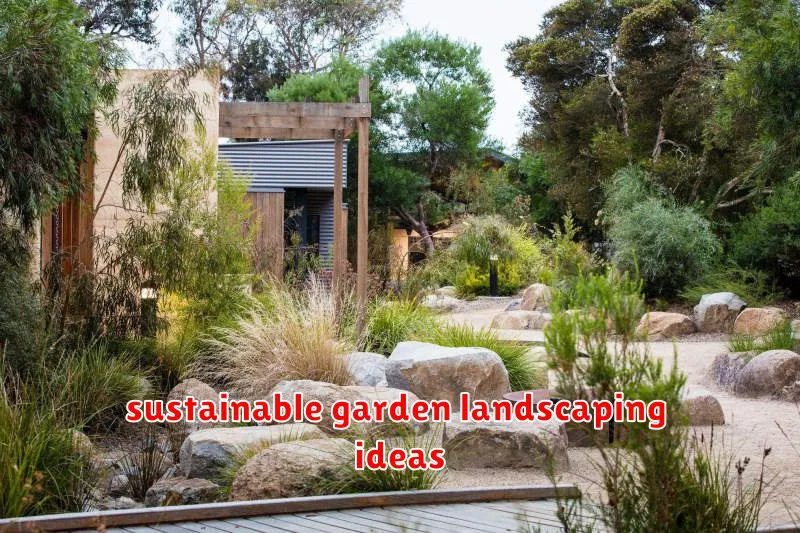Creating a sustainable garden is more than just a trend; it’s a crucial step towards eco-friendly living. This article explores innovative sustainable garden designs that minimize environmental impact while maximizing resource efficiency. We will delve into practical strategies for incorporating water conservation techniques, choosing native plants, and implementing organic gardening practices to cultivate a thriving and environmentally responsible outdoor space. Learn how to build a self-sustaining garden that contributes to a healthier planet and enhances your quality of life through eco-conscious landscaping.
Compostable Planters
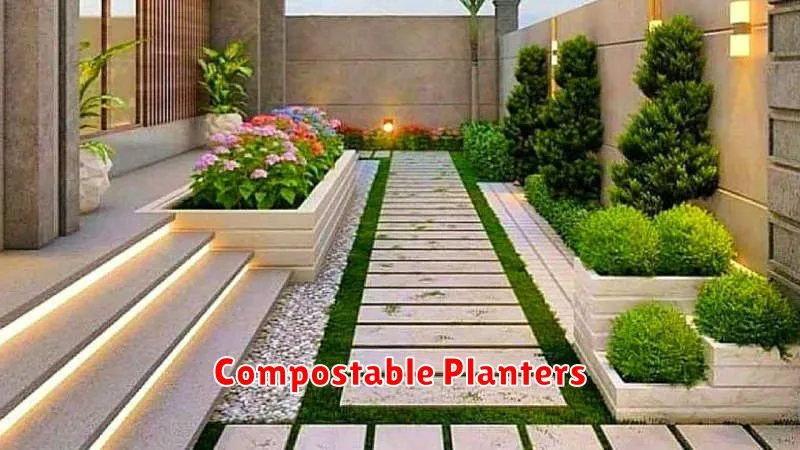
Compostable planters offer a sustainable alternative to traditional plastic pots. Made from materials like peat moss, coconut coir, or plant-based plastics, these planters decompose naturally, enriching the soil and minimizing plastic waste. This aligns perfectly with eco-friendly gardening practices.
Choosing compostable planters reduces the environmental impact associated with plastic production and disposal. They are a particularly advantageous option for starting seeds indoors or for smaller plants, where the planter’s lifespan is relatively short before transplanting.
While the initial cost may be slightly higher than plastic counterparts, the long-term environmental benefits and reduced waste make compostable planters a worthwhile investment for environmentally conscious gardeners seeking a truly sustainable garden design. Their biodegradable nature also eliminates the need for separate waste disposal, simplifying the overall gardening process.
Solar Irrigation Systems
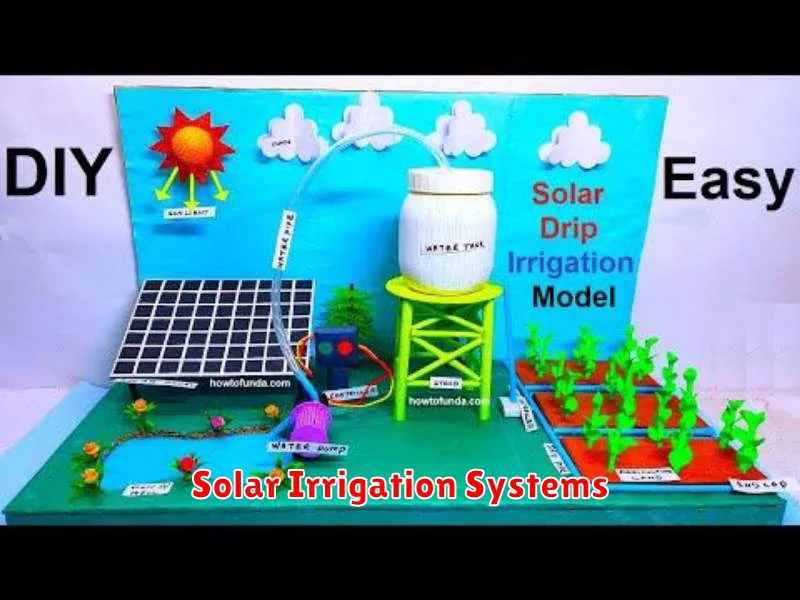
Solar irrigation systems offer a sustainable solution for watering gardens, eliminating reliance on the grid and reducing carbon emissions. These systems utilize solar panels to power pumps, drawing water from a source like a well or rainwater collection tank and distributing it throughout the garden via a network of pipes and sprinklers or drip irrigation.
The efficiency of solar irrigation varies based on factors such as solar panel capacity, pump size, and water demand. However, they provide a reliable and environmentally friendly alternative to traditional methods, especially in remote areas or locations with limited access to electricity. Cost-effectiveness is another key advantage, with initial investment offset by long-term savings on energy bills and reduced water waste from inefficient watering practices.
Proper system design and installation are crucial for optimal performance. This involves careful consideration of water source, garden layout, sunlight exposure, and the selection of appropriate components. Regular maintenance, including cleaning solar panels and inspecting pump functionality, ensures the long-term sustainability and effectiveness of the solar irrigation system.
Native Plant Gardens
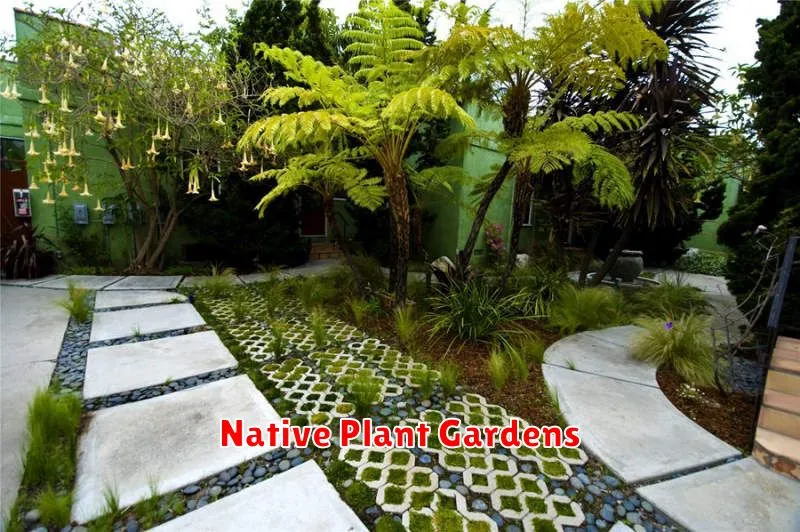
Integrating native plants into your garden design offers significant benefits for sustainable living. These species are naturally adapted to the local climate and soil conditions, requiring less water, fertilizer, and pesticides than non-native plants. This reduces your environmental impact and lowers maintenance costs.
Biodiversity is significantly enhanced by incorporating native plants. They provide crucial habitats and food sources for local pollinators like bees and butterflies, as well as birds and other wildlife. This fosters a healthier ecosystem within your garden and contributes to the larger ecological network.
Choosing native plant species also promotes a sense of place. Your garden becomes a reflection of the local environment, showcasing the unique flora of your region. This aesthetic approach aligns with sustainable practices by emphasizing natural beauty and minimizing reliance on resource-intensive landscaping methods.
Recycled Wood Pergolas
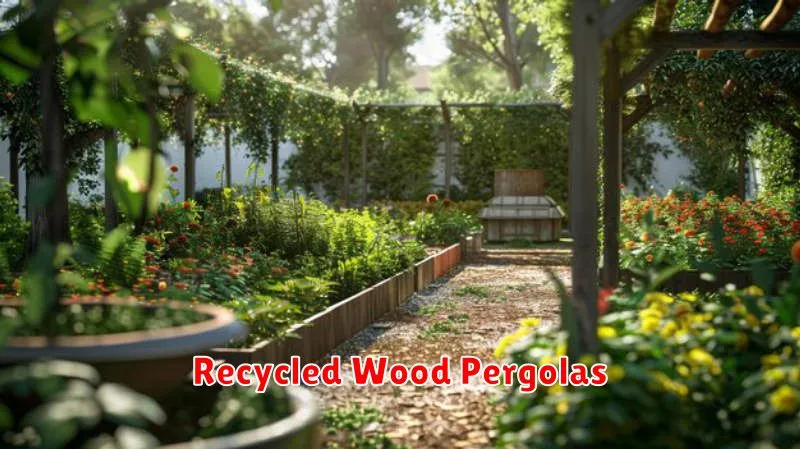
Recycled wood pergolas offer a sustainable and aesthetically pleasing addition to any eco-friendly garden. Utilizing reclaimed lumber reduces the demand for newly harvested wood, minimizing deforestation and its associated environmental impact. The inherent character of reclaimed wood, with its varied textures and colors, adds a unique charm to outdoor spaces.
Choosing a pergola constructed from recycled wood contributes to a smaller carbon footprint compared to structures made from newly sourced timber. The process of reclaiming and repurposing wood often involves less energy consumption than the production of new lumber, further enhancing its sustainability credentials. Furthermore, properly treated recycled wood can possess significant durability, ensuring the pergola’s longevity.
The design flexibility of recycled wood pergolas is another key advantage. They can be customized to fit various garden styles and sizes, offering a versatile solution for enhancing outdoor living areas while promoting environmentally conscious practices. The use of recycled wood aligns seamlessly with a commitment to sustainable gardening and eco-friendly living.
Rainwater Harvesting Barrels

Rainwater harvesting barrels offer a simple yet effective method for incorporating sustainable practices into your garden design. These barrels collect rainwater from rooftops or other surfaces, providing a readily available source of irrigation water. This significantly reduces reliance on municipal water supplies, conserving a precious resource and lowering water bills.
The size and placement of your rainwater harvesting barrels should be carefully considered. Larger barrels will obviously store more water, but space constraints may dictate a smaller setup. Optimal positioning involves placing barrels where they can effectively collect rainwater from downspouts while remaining easily accessible for watering.
Beyond simple collection, incorporating a filtration system can further enhance the quality of the harvested water. This prevents debris from entering the barrel, ensuring a cleaner water supply for your plants. Remember to regularly clean your barrels to maintain optimal efficiency and prevent the growth of mosquitoes or other pests.
Biodegradable Mulch Beds
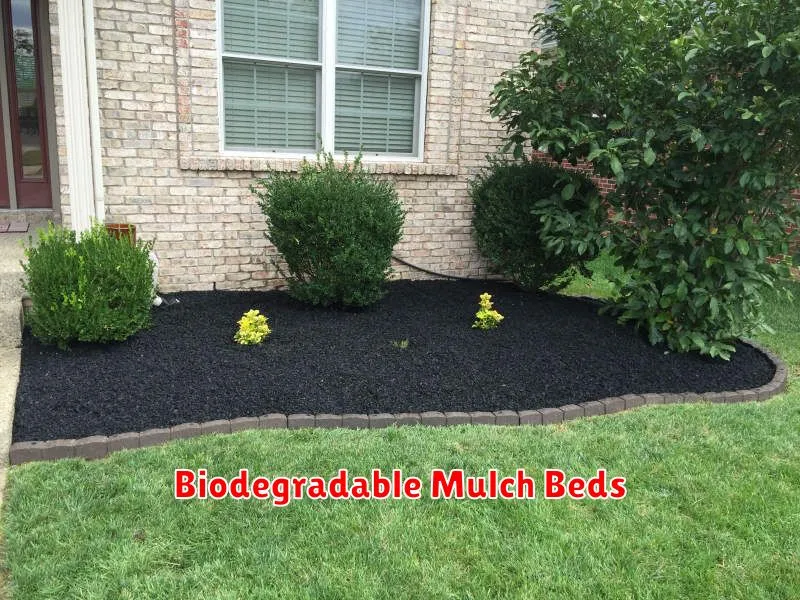
Biodegradable mulch beds offer a sustainable and eco-friendly approach to gardening. Unlike traditional plastic mulches, biodegradable options, such as straw, shredded leaves, or wood chips, decompose naturally, enriching the soil with organic matter. This process improves soil structure, water retention, and nutrient availability, benefiting plant growth while minimizing environmental impact.
The decomposition process also helps suppress weeds, reducing the need for herbicides. Choosing materials sourced locally further minimizes the carbon footprint associated with transportation. Proper application of biodegradable mulch is crucial for its effectiveness; a layer of 2-4 inches is generally recommended, leaving some space around plant stems for air circulation.
Benefits extend beyond soil health. Biodegradable mulch helps regulate soil temperature, protecting plant roots from extreme heat or cold. This contributes to overall plant vigor and reduces the need for supplemental watering, promoting a more resource-efficient gardening practice. Ultimately, integrating biodegradable mulch beds into your garden design supports a healthy ecosystem and aligns with principles of sustainable living.
Vertical Vegetable Walls
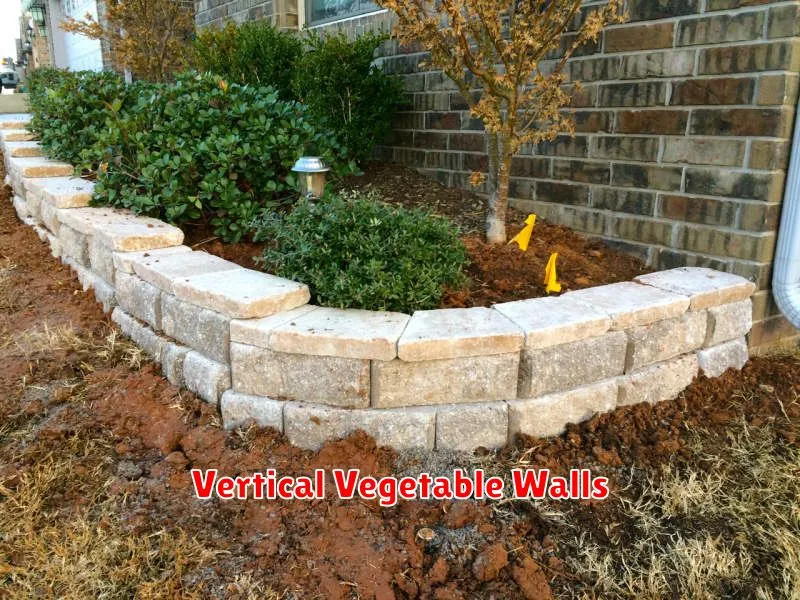
Vertical vegetable walls, also known as living walls or green walls, offer a space-saving and aesthetically pleasing solution for urban gardening and sustainable living. They utilize vertical space to maximize plant growth, making them ideal for smaller yards, balconies, or even indoor environments. Vertical farming techniques enhance efficiency by increasing yields in a smaller footprint.
The design and construction of a vertical vegetable wall can vary greatly. Modular systems are commonly used, offering flexible designs and easy maintenance. These systems usually incorporate irrigation and drainage components to ensure optimal plant health. Choosing the right plants is crucial; selecting vining or trailing varieties is essential for successful vertical growth.
Beyond aesthetic appeal, vertical vegetable walls contribute significantly to environmental sustainability. They help reduce the urban heat island effect, improve air quality, and promote biodiversity. By growing your own food locally, you reduce your carbon footprint associated with food transportation and packaging, making them a key element in eco-friendly living.
Upcycled Garden Furniture
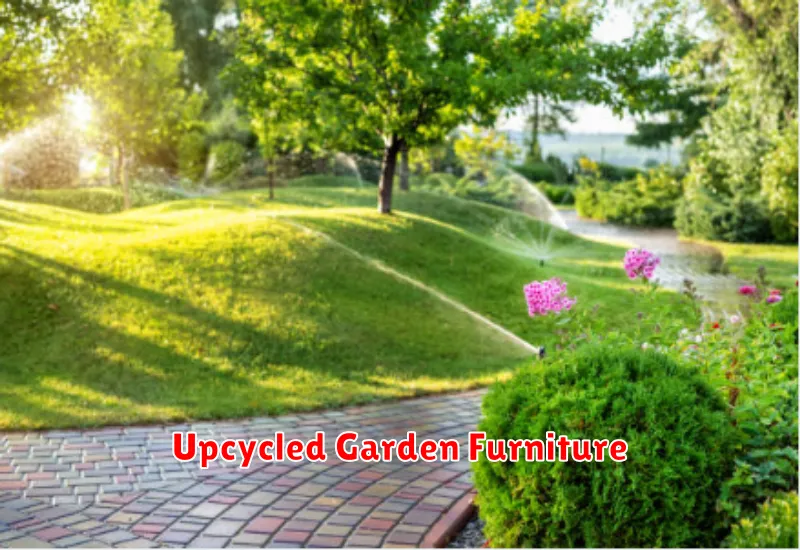
Upcycled garden furniture offers a sustainable and stylish alternative to newly manufactured pieces. By repurposing old materials such as pallets, discarded wood, and even metal containers, you can create unique and charming seating, tables, and other garden accents. This approach significantly reduces waste and minimizes the environmental impact associated with furniture production.
The creative possibilities are vast. Pallets can be easily disassembled and reassembled into benches, coffee tables, or even vertical planters. Old metal containers, such as oil drums or buckets, can be transformed into stylish planters or quirky side tables with a little sanding, cleaning, and painting. With some ingenuity and basic DIY skills, you can create personalized pieces that reflect your individual style.
Incorporating upcycled furniture into your garden design not only enhances its aesthetic appeal but also demonstrates a commitment to environmentally responsible practices. It’s a simple yet effective way to contribute to a more sustainable lifestyle and create a beautiful, eco-friendly outdoor space. The process itself can be a rewarding and creative experience, allowing you to personalize your garden with one-of-a-kind pieces.
Low-Water Landscaping
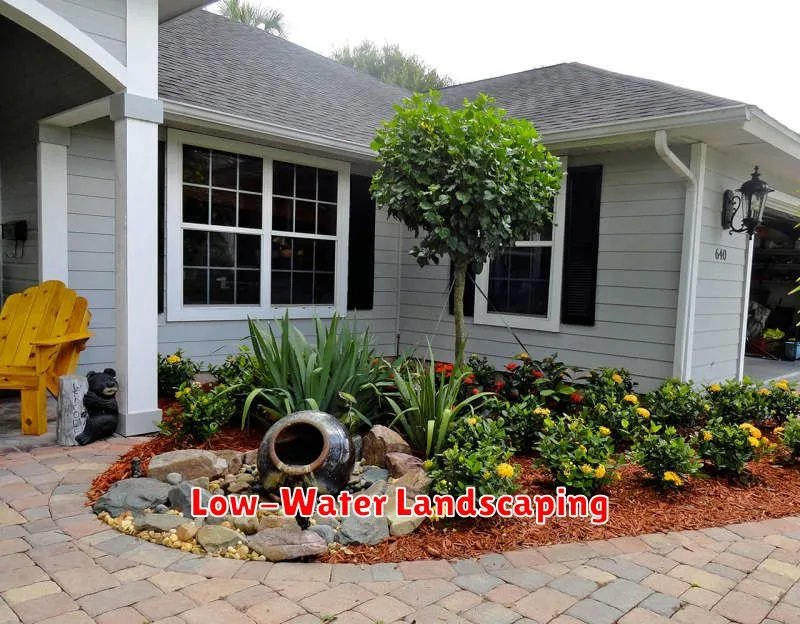
Low-water landscaping, also known as xeriscaping, is a sustainable approach to gardening that significantly reduces or eliminates the need for supplemental irrigation. This is achieved by selecting and strategically placing drought-tolerant plants native to the region, utilizing water-wise gardening techniques such as mulching and efficient drip irrigation systems, and incorporating design elements that minimize water evaporation.
Key benefits include water conservation, reducing reliance on municipal water supplies, and lower maintenance costs. Proper planning is crucial for success; this includes careful site assessment to determine sun exposure, soil type, and drainage characteristics, informing the selection of appropriate plant species. The use of native plants is particularly advantageous as they are already adapted to the local climate and require minimal care.
Beyond the environmental advantages, low-water landscaping offers aesthetic appeal. With careful plant selection and design, a beautifully diverse and visually engaging garden can be created that thrives even in arid conditions. This approach contributes to a more eco-friendly and sustainable living environment by minimizing resource consumption and promoting biodiversity.
LED Solar Path Lights
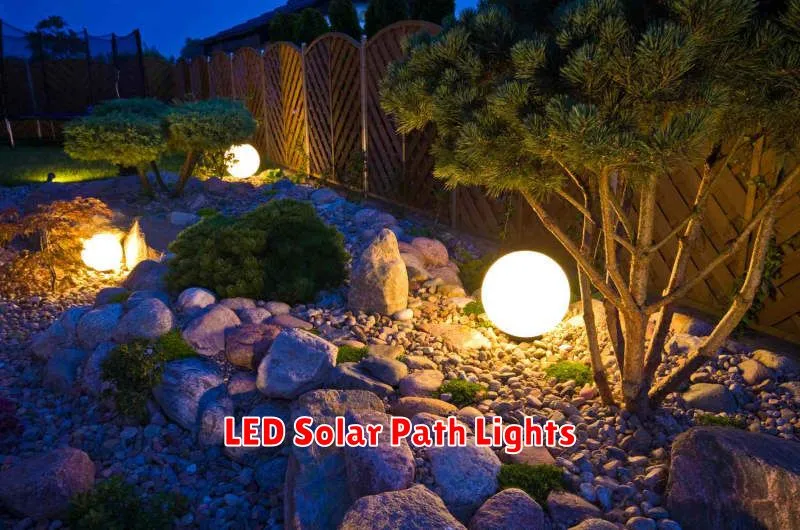
LED solar path lights are a sustainable and eco-friendly lighting solution for gardens. Their energy source, sunlight, eliminates the need for grid electricity, reducing your carbon footprint. These lights offer a low-maintenance alternative to traditional pathway lighting, requiring minimal upkeep beyond occasional cleaning.
The use of LED technology further enhances their energy efficiency. LEDs consume significantly less power than incandescent bulbs, leading to longer battery life and reduced environmental impact. Many models offer adjustable brightness settings, allowing for customized illumination levels to meet your specific needs.
Beyond their environmental benefits, solar path lights provide a practical and aesthetic enhancement to any garden. They offer safe and convenient illumination for nighttime navigation, improving both safety and curb appeal. The diverse range of styles available ensures that there is a suitable option to complement any garden design.

